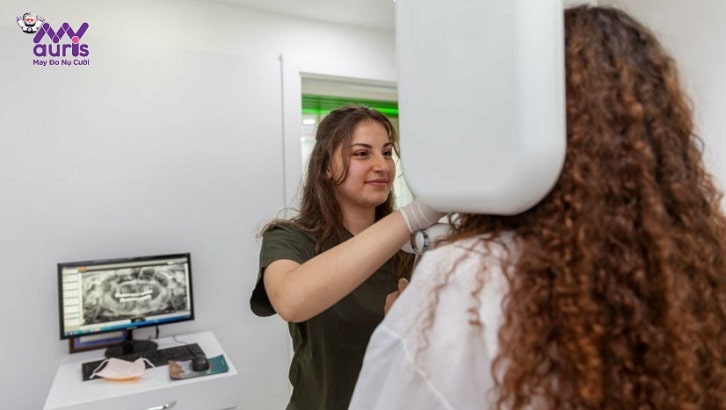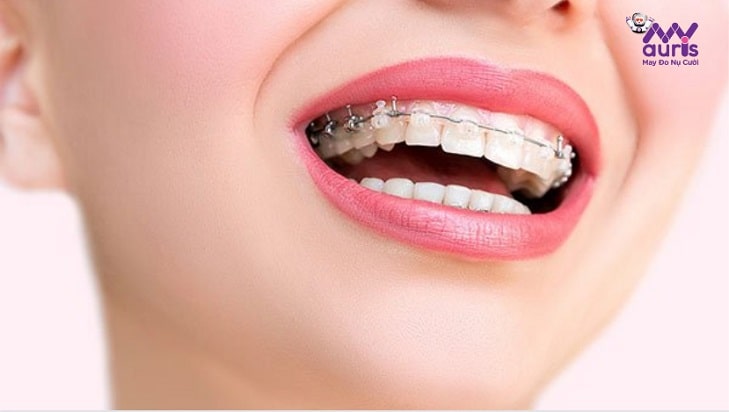Braces is a method that helps overcome tooth defects, thereby helping people with braces own new, beautiful and strong teeth. Furthermore, for braces to be effective, the braces process plays an important role. Let’s follow the braces journey of customer Vo Quynh Nhu when choosing ceramic braces.
Customer Vo Quynh Nhu’s braces journey
The braces method is no longer strange to many customers today. Furthermore, cosmetic braces are considered a solution to improve problems such as misaligned teeth, crooked teeth, sparse teeth, overbites, underbites, etc. With customer Vo Quynh Nhu’s braces journey, it will help many customers have more motivation to improve their teeth defects.
I will share the details after the 2-year braces journey as well as the changes in each specific stage to make it easier for you. Specifically as follows:
Stage of attaching braces
Before attaching braces, I was examined by a team of doctors and advised on the appropriate type of braces. I made the decision to choose ceramic braces because it suited my needs. After that, the doctor will perform steps such as placing elastic bands, grinding gaps, extracting teeth or expanding the jaw.
The change after the first 3 months of braces
I felt it clearly after 3 months of wearing braces. During this time, I felt unfamiliar with the presence of braces, so I still had many difficulties in eating and drinking. However, looking at the results of the change, I am even more motivated to continue my braces journey.
The braces process changes after 6 months
During the braces process at the 6-month braces stage, I always comply with regular check-ups at least every 4-6 weeks for the doctor to check and evaluate the speed of tooth movement. Each time, the doctor is dedicated and gives instructions on how to take care of your teeth at home. So the braces process went very smoothly.
After 6 months of wearing braces, I saw a change in the protruding teeth and moving to the correct position on the jaw.
The braces process changed after 9 months
I have gone ½ way in the orthodontic process. At this time, I saw the teeth begin to stabilize in the desired position according to the treatment regimen. To see the clearest results, I took photos of my teeth in the early stages to compare the difference after a few months of braces.
The change after 12 years of wearing ceramic braces
I continue to wear braces and feel the change as the teeth continue to move. I feel very happy to have improved some of my misaligned teeth as well as my bite.
At this point, the doctor will check to see if the jaw and teeth are stable. If the teeth are stable and the bite is tight, the doctor will consider removing the braces and wearing a retainer to stabilize the jaw.
Thus, according to what customer Vo Quynh Nhu shared, it will help you have more motivation and make the right decisions to improve the aesthetics of your jaw. Furthermore, when customers choose braces, they will need to invest some time to receive a worthy reward for themselves!
Process of ceramic braces at My Auris dentistry
A standard braces process will include 5 steps, short or long time will depend on the oral condition as well as the patient’s cooperation:
Step 1: Examination and X-rays
In order for the braces process to go smoothly, the doctor will conduct a general examination and take X-rays to evaluate the patient’s teeth condition such as gapped teeth, overbites, underbites, crooked teeth or misaligned teeth, etc.
Furthermore, based on the purpose of the examination, the doctors can prescribe a number of radiographic techniques. other. From there, collecting data on the condition of teeth and jawbone will achieve accurate results:
- Interior and exterior photography
- Conebeam CT scan for panoramic view of teeth and jawbone;
- Periapical scan to check for abnormal tooth structure and growth such as supernumerary teeth and impacted teeth;

Step 2: Consulting treatment regimen
After determining the condition teeth, the doctor will create a treatment regimen as well as advise on the type of braces suitable for each customer. In the case of a narrow jaw, the doctor will prescribe a jaw expander or a jaw expander to prepare for the next step, which is the separation stage.
Step 3: Attach the braces
Attach the applianceBraces are one of the important stages of braces and you must ensure that they are sturdy and do not fall after being attached. During the treatment period, the orthodontist will monitor and evaluate the treatment regularly to monitor the process of tooth movement.
Step 4: Regular dental check-ups
Patients should have regular check-ups as prescribed by the doctor to monitor the speed of tooth and joint movement. bite:
- With braces, customers will have regular check-ups and check-ups once a month;
- On the contrary, for Invisalign clear braces, customers should change the trays according to instructions at home. On average, you need to have a follow-up visit once every 1 – 2 months.
Step 5: Remove the braces and wear a retainer
When the orthodontic effect is achieved such as teeth being in the correct position, teeth interlocking, and physiological bite. At this time, the doctor will remove the braces and put a retainer on the patient.
The retainer has the effect of stabilizing the teeth and preventing the periodontal ligaments from moving and keeping the orthodontic results in place. At this time, the patient can perform a number of treatments such as whitening, porcelain veneers, scaling, etc. to have beautiful, even teeth.

Notes after removing braces
After braces, the oral care process needs to be focused and aimed at avoiding complications and unwanted occurrences that affect the treatment results:
Regular tooth tightening
Regular dental examination is a mandatory requirement during the braces process. The doctor not only monitors tooth movement but can also intervene if the teeth do not move according to the treatment regimen.
Use a retainer
Wearing the retainer on time will help stabilize the braces results.
Pay attention to your diet
After removing braces, your teeth will still ache, because you need to avoid tough and hard foods. Instead, use soft foods such as porridge, soup, milk, boiled and stewed foods to gradually adapt to your teeth.
Hopefully the article below will inform you of the following ideas.Useful information about the braces journey. From there, help you choose the braces method that is suitable for the orthodontic process according to medical standards to have beautiful teeth. To schedule a dental visit, please contact My Auris Dental directly to receive advice from qualified and experienced doctors!
Kim Dung





